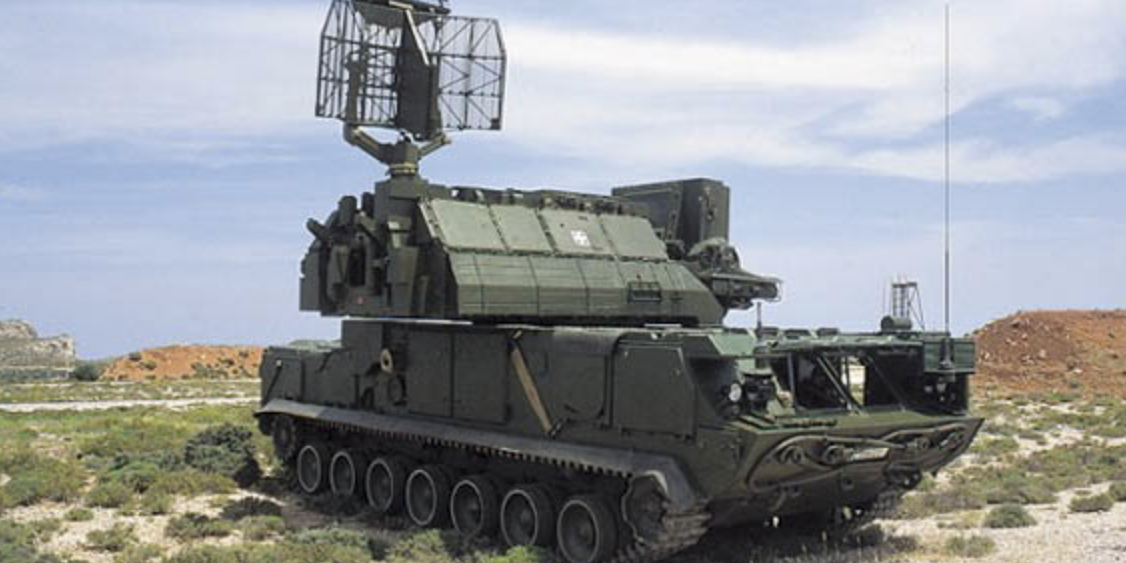Quick Facts
| PRC/NATO Designation | HQ-17 (SA-15 Gauntlet) |
| Variants | None |
| Mobility and Role | Ground-based/road-mobile; short-range air and missile defense |
| Interceptors and Range | 9M331 missile (12 km) |
| Sensors |
E/F-Band detection radar; range of 25 km while moving G/H-Band tracking radar; range of 15 km while stopped |
| Targets | Cruise missiles, low-flying aircraft, short-range ballistic missiles |
| Status/Exports | Operational; Exported to Cyprus, Egypt, Greece, Iran, Ukraine, and Venezuela |
| Designer/Producer | Almaz-Antey Concern/PLA |
Overview
The Hong Qi-17 is a cold-launched Chinese missile defense system, which most scholars consider to be a reverse-engineered copy of the Russian Tor-M1 aerial defense system. China claims that the HQ-17 has a single-shot kill probability of 90 percent against cruise missiles.[i]Like Tor, the HQ-17 features two radar units with different purposes: its E/F-band detection radar can scan 25 km while moving; once a target is detected, the system stops momentarily and uses its G/H-band 15-km tracking radar to engage a target.[ii]Each HQ-17 unit contains eight missiles and is capable of engaging two targets simultaneously.[iii]The HQ-17 is completely autonomous and has a short reaction time.[iv]The HQ-17 is rugged enough to keep up with frontline units like tank battalions and protect them from drone and helicopter attacks.
Strategic Implications
The HQ-17 fills the role of a short-range, highly-mobile point defense system within the Chinese aerial defense structure. The system was reverse-engineered and produced principally to repel the threat of American and Taiwanese cruise missiles. The HQ-17 can operate in any kind of weather and during nighttime. The chief drawback to the HQ-17 is its high cost, which averages $26 million per unit.[v]Due to its cost, the HQ-17 is not used as widely as the HQ-16. Though it is an extremely capable system, the HQ-17 will lose some of its strategic value with the development of the HQ-29, which is an indigenous point-defense system comparable to the PAC-3.
Timeline
2007:Venezuela announces its intent to purchase the HQ-17 from China.
2005:The HQ-17 enters service in the PLA.
2003:China begins development of the HQ-29.[vi]
1997:China begins purchasing Tor-M1 systems from Russia, procuring more than fifty systems over five years. China begins development of the HQ-17.
1991:The Tor-M1 achieves initial operational capacity.[vii]
1989:Development of the Tor-M1 is completed.[viii]
1983: Almaz-Antey concern begins producing the Tor system.
Recent News
References
[i]https://www.popsci.com/blog-network/eastern-arsenal/hq-17-classic-russian-missile-new-chinese-twist#page-2
[ii]http://weaponsystems.net/weaponsystem/EE05%2520-%2520SA-15%2520Gauntlet.html
[iii]http://www.deagel.com/Artillery-Systems/Tor-M1_a000375001.aspx
[iv]https://www.globalsecurity.org/military/world/russia/sa-15.htm
[v]http://www.deagel.com/Artillery-Systems/Tor-M1_a000375001.aspx
[vi]https://www.globalsecurity.org/space/world/china/hq-29.htm
[vii]http://www.military-today.com/missiles/tor.htm
[viii]Ibid.

